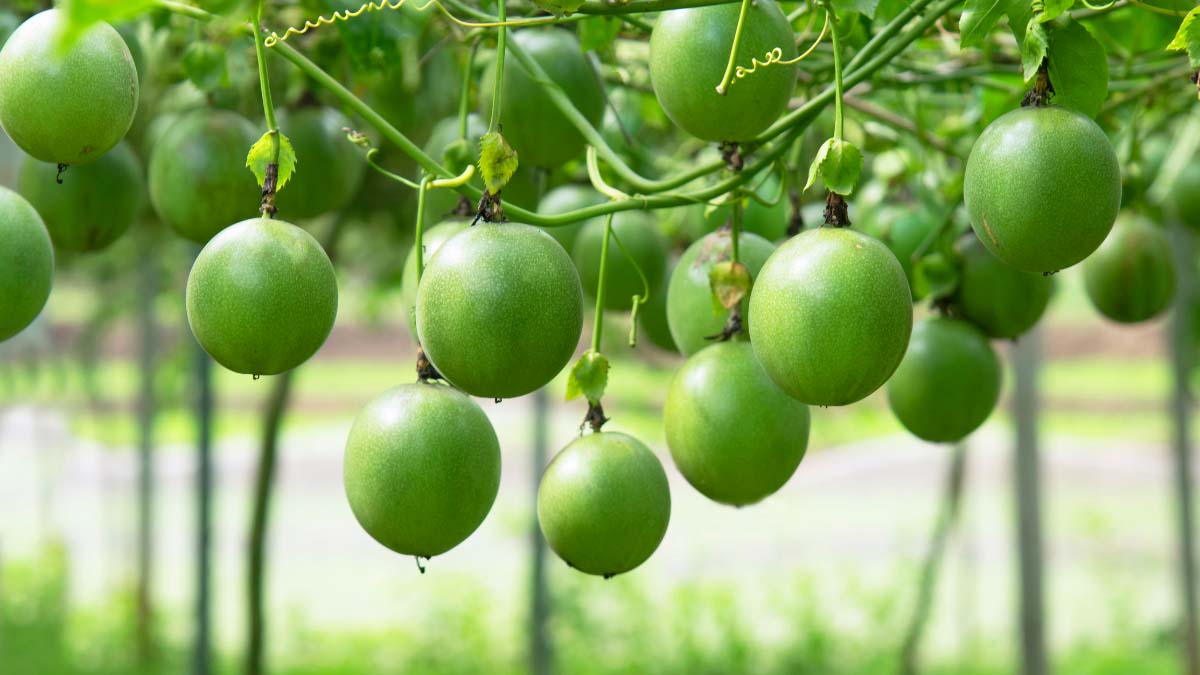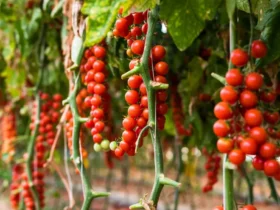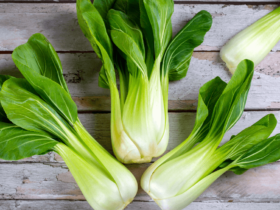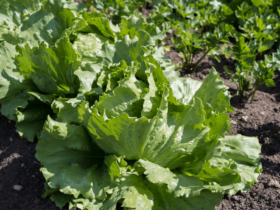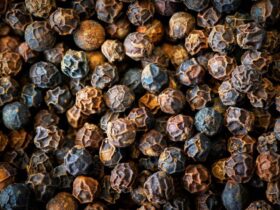Passion fruit Growing Stages are which is : flowering, pollination, fruit development, and ripening. In the flowering stage, the plant produces beautiful and fragrant flowers, which eventually turn into fruits.
Pollination occurs when bees and other pollinators transfer pollen from the male flower to the female flower, leading to fruit formation. As the fruits develop, they change in color and size, and eventually, they ripen, turning from green to yellow or purple, depending on the variety.
Harvesting is typically done when the fruits are fully ripened and have reached their peak flavor. Growing passion fruit involves understanding the different stages of growth to ensure optimal care and timing for harvesting. We will explore each stage in detail, providing the necessary information for successful passion fruit cultivation.
The Fascinating Journey Of Passion Fruit
Passion fruit, also known as Passiflora edulis, is a tropical vine that goes through several stages of growth before producing its luscious fruits. From the tiny seed to the mature vine laden with vibrant purple fruits, the journey of passion fruit is filled with wonder and excitement. In this article, we will explore the intriguing transformation of passion- fruit, starting from the seed to the seedling, followed by the growth of a young vine, and culminating in the flowering and fruit set.
From Seed To Seedling
The journey of a passion fruit plant begins with the humble seed. The seeds are harvested from ripe passion- fruits and can be sown directly or first treated to enhance germination. Once sown, the seed requires a warm and moist environment to sprout. Over the course of a few weeks, a delicate seedling emerges from the soil, sporting its first pair of leaves. This tiny seedling is primed to embark on its upward journey toward the sun.
The Growth Of A Young Vine
The young passion- fruit vine quickly establishes a strong root system to support its growth. As it stretches towards the sky, the vine develops tendrils that aid in climbing and anchoring itself onto trellises or other support structures. With ample sunlight and regular watering, the vine grows rapidly, producing an abundance of lush foliage. Each leaf extends its surface area, capturing sunlight to fuel the plant’s development. In a matter of months, the once diminutive seedling transforms into a sprawling vine, ready to bear the weight of future flowers and fruits.
Flowering And Fruit Set
The pinnacle of the passion fruit plant’s journey is reached when it begins to flower. As the vine matures, it starts producing clusters of exquisite and intricately designed flowers. The blooms showcase a striking combination of vibrant colors, attracting pollinators, such as bees and butterflies. Once successfully pollinated, the blossoms give way to the formation of small, green fruits. These fruits gradually enlarge, and their skin transitions from green to the well-known purple or yellow hues, depending on the variety. After several weeks of growth, the passion fruits reach their peak ripeness, offering a delightful blend of tanginess and sweetness.

Nurturing The Passion Fruit Plant
Passion fruit is a tropical fruit that is not only delicious but also rich in vitamins and antioxidants. If you are passionate about growing your own passion- fruit plant, it is important to provide the right conditions and support its development properly. In this article, we will explore the essential growing conditions, supporting the plant’s development, and the importance of pruning and training.
Essential Growing Conditions
Passion fruit plants thrive in warm climates with temperatures ranging from 65-80°F (18-27°C). They need full sun exposure, at least 6-8 hours a day, to ensure optimal growth and fruit production. The soil should be well-draining, rich in organic matter, and have a pH level between 6.5 and 7.5. It is crucial to choose a suitable location that offers protection from strong winds, as passion fruit vines are delicate and can be easily damaged.
Supporting The Plant’s Development
When planting a passion fruit vine, it is essential to provide proper support for its growth and development. Since passion- fruit is a climbing plant, it requires a sturdy trellis or fence to cling onto. The trellis should ideally be 6-8 feet high and made of durable materials such as metal or treated wood. Make sure to install the trellis before planting the vine to avoid damaging the roots. The passion- fruit vine will use the trellis to climb and spread, saving space in your garden and facilitating better air circulation, which is crucial for preventing fungal diseases.
Pruning And Training
Pruning and training the passion fruit plant are essential steps to maintain its health and optimize fruit production. Regular pruning helps to remove dead or damaged branches and encourages the growth of new shoots. It is best to prune the vine during the dormant season, which is usually in late winter or early spring. Remove any weak or diseased branches, as well as suckers that emerge from the base of the plant.
To support the growth of the main vine, choose the healthiest and strongest shoot and gently train it to grow vertically on the trellis. Use soft ties or twine to secure the vine to the trellis, avoiding tight knots that could damage the plant. As the vine grows, continue to guide its tendrils along the trellis, directing its growth in the desired direction. Regularly check and adjust the ties or twine to prevent constriction.
Remember to water the passion fruit plant regularly, keeping the soil moist but not waterlogged. Apply a layer of mulch around the base of the plant to help retain moisture and control weeds. Additionally, it is recommended to fertilize the plant every 2-4 weeks with a balanced fertilizer, following the instructions on the packaging.
By providing the essential growing conditions, supporting the plant’s development with a suitable trellis, and practicing regular pruning and training, you will foster a healthy and productive passion -fruit plant. Enjoy the satisfaction of nurturing your passion fruit vine and be rewarded with abundant, delicious fruits!

Pests And Diseases
When cultivating passion fruit, it’s crucial to be alert to potential threats posed by pests and diseases. These can significantly affect the growth and yield of passion -fruit. By being knowledgeable about common threats, implementing preventive measures, and employing effective treatment methods, you can ensure a healthy passion fruit harvest.
Common Threats To Passion Fruit
Passion -fruit is susceptible to a variety of pests and diseases that can hinder its development. Some common threats include:
- Aphids
- Fruit flies
- Nematodes
- Fungal diseases like Fusarium wilt and Powdery mildew
Preventive Measures
Implementing preventive measures is crucial in protecting passion fruit from pests and diseases. Here are some important steps to consider:
- Regularly inspect the plants for signs of infestation or disease.
- Maintain proper hygiene in the garden, removing fallen leaves and debris.
- Use natural predators such as ladybugs to control aphid populations.
- Apply organic insecticidal soaps to deter fruit flies.
Effective Treatment Methods
When confronted with pests and diseases, it’s essential to take swift and effective action. Consider the following treatment methods:
- Utilize neem oil as a natural and safe solution to combat aphids and fungal diseases.
- Introduce nematode-resistant varieties of passion fruit to the garden.
- Apply sulfur-based fungicides to control and prevent powdery mildew.
- Remove and destroy infected plants to prevent the spread of diseases like Fusarium wilt.

Harvesting And Yield
Harvesting is a crucial stage in the passion fruit growing process as it determines the quantity and quality of the yield. Understanding when to harvest, maximizing fruit production, and practicing proper post-harvest handling are all essential aspects of successful passion fruit cultivation.
When To Harvest
The timing of harvesting passion fruit is crucial, as it directly impacts the flavor and sweetness of the fruit. Harvesting too early results in underripe fruit with a sour taste, while leaving it too late leads to overripe fruit that may not store well. Here are a few indicators to help you determine the right time to harvest:
- Fruit color: The skin of the passion- fruit changes color as it ripens. Most varieties transition from green to yellow or purple.
- Firmness: Gently press the fruit. It should yield slightly without being too soft or too hard.
- Dropping: Some varieties of passion- fruit naturally drop from the vine when they are fully ripe.
- Weight: Ripe passion fruit tends to feel heavier than unripe ones due to its increased juice content.
Maximizing Fruit Production
To maximize fruit production, it is essential to provide optimal growing conditions throughout the plant’s life cycle. Here are a few tips to enhance your passion fruit yield:
- Proper spacing: Passion -fruit vines require adequate space to grow and spread their tendrils. Allow at least 6 to 8 feet between plants.
- Pruning: Regularly prune the vines to promote air circulation, control the growth, and redirect nutrients to fruit-bearing areas.
- Fertilization: Apply a balanced fertilizer that is rich in potassium, phosphorus, and nitrogen to support healthy growth and fruit production.
- Pollination: Passion fruit flowers require pollination for fruit formation. Encourage the presence of pollinators such as bees and butterflies in your garden.
Post-harvest Handling
Proper post-harvest handling is crucial in preserving the quality and extending the shelf life of passion fruit. Here are some essential practices to follow:
- Harvest gently: Handle the fruit with care to prevent bruising or damage.
- Clean and dry: Thoroughly wash the fruit with clean water and allow it to dry before storage or further processing.
- Storage conditions: Passion fruit should be stored at cool temperatures, preferably around 45-50°F (7-10°C) to minimize spoilage.
- Avoid moisture: Ensure the fruit is stored in a dry environment to prevent fungal growth or decay.

Culinary And Medicinal Uses
Passion fruit goes through various growth stages before reaching maturity. This versatile fruit is prized for both its culinary and medicinal uses. Its pulp is commonly used in desserts, while its seeds are valued for their medicinal properties, offering potential health benefits.
Incorporating Passion Fruit In Cooking
Passion fruit is a versatile fruit that can be incorporated into various culinary creations. Its unique tangy-sweet flavor and aromatic fragrance make it a popular ingredient in both sweet and savory dishes. Here are some wonderful ways to enjoy the culinary delights of passion fruit:
- Sauces and dressings: The vibrant and tangy nature of passion fruit makes it an excellent addition to sauces and dressings. Use passion- fruit pulp to create a zesty and refreshing sauce that pairs beautifully with seafood, poultry, or salads.
- Desserts and pastries: Passion fruit works wonders in desserts, adding a tropical twist to traditional favorites. From mousses and tarts to cakes and macarons, the delightful flavor of passion fruit adds a delightful burst of sunshine.
- Smoothies and beverages: Blend passion fruit pulp with other fruits, yogurt, or coconut water to create refreshing and nutritious smoothies. You can also mix passion -fruit juice with soda water for a sparkling and thirst-quenching beverage.
- Marinades and glazes: The acidity and tanginess of passion fruit make it an excellent ingredient for marinades and glazes. Its natural enzymes tenderize meats while infusing them with an irresistible flavor.
Health Benefits And Medicinal Properties
Aside from its delightful taste, passion- fruit also offers a host of health benefits and medicinal properties. Here are some ways this tropical fruit can contribute to your well-being:
- Rich in antioxidants: Passion fruit is loaded with antioxidants, which help protect the body against harmful free radicals. These compounds may help reduce the risk of chronic conditions like heart disease and certain types of cancer.
- Boosts immune system: The high vitamin C content in passion fruit can strengthen the immune system, helping to ward off common illnesses and infections.
- Aids digestion: With its high fiber content, passion fruit promotes healthy digestion and prevents constipation. It can also soothe the gastrointestinal tract, making it an excellent natural remedy for digestive issues.
- Calming effects: Passion fruit contains certain compounds that have a calming effect on the nervous system. Consuming passion fruit may help reduce anxiety, improve sleep quality, and promote relaxation.

Traditional And Modern Applications
Passion fruit has been used for centuries in traditional medicine due to its various healing properties. However, it has also found its place in modern applications. Here’s an insight into how passion fruit is traditionally and presently utilized:
| Traditional Applications | Modern Applications |
| Used as a natural remedy for insomnia and anxiety. | Extracted for use in natural sleep aids and anxiety-relief supplements. |
| Applied topically to heal wounds and reduce skin inflammation. | Incorporated into skincare products due to its antioxidant and anti-inflammatory properties. |
| Brewed into tea for its soothing effects on digestion. | Blended into digestive teas and herbal blends designed to ease digestive discomfort. |
Passion fruit truly offers a world of flavors and potential health benefits. Whether you love experimenting with culinary creations or seeking natural remedies, incorporating passion fruit into your life is definitely worth considering.
Frequently Asked Questions Of Passion Fruit Growing Stages
How Long Does It Take For Passion- Fruit To Grow?
Passion fruit typically takes about 6-9 months to mature and produce fruit after planting.
What Are The Different Stages Of Passion Fruit Growth?
Passion fruit goes through three main stages: flowering, fruit development, and ripening. Each stage has its unique characteristics and requirements.
How Can I Ensure Successful Passion Fruit Growth?
To ensure successful passion- fruit growth, provide a well-draining soil, ample sunlight, regular watering, and provide support for the vines to climb. Pruning and fertilizing can also enhance growth and fruit production.
Conclusion
Passion fruit growing has four primary stages—germination, seedling, vegetative growth, and fruiting. Understanding these stages is essential for successfully cultivating passion fruit. By following the right practices and providing proper care, you can enjoy a bountiful harvest of delicious passion fruits from your garden.
Happy growing!
